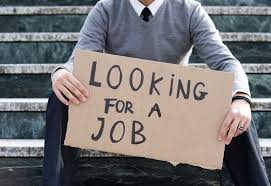
Although there are indications of steady hiring and falling unemployment, experts are still baffled by some of the relevant data. At the core of the debate is whether the current 6.1 percent unemployment figure, while it is far below the 10 percent rate registered at the beginning of the recession, really give a true picture, or does it overstate the improvement?
The question of whether the feds will raise interest rates depends on how things sort themselves out. “We’ve never seen a labor market quite like this,” said Peter Cappelli, an economist with the Wharton School of Business.
Despite the improvement of the unemployment part of the puzzle, there are many companies that aren’t filling their job openings and many individuals who were jobless during the height of the recession apparently are waiting for further signs of stability before they start job searches.
The National political campaigns, soon to end in the Nov. 4 balloting, have kept the focus on the labor situation. Polling among voters indicates that behind the overall economy and terrorism, the unemployment statistics are much on the minds of Americans.
Five “mysteries” points related to the labor quandary include:
1. How many people are in the pool of those who didn’t look for jobs when the economy slumped or stopped looking when the recession went on? Will they re-enter the job search when it is clear that the economy is improving? Since the recession began in 2007, the number of adults either working or seeking work has dipped from 66 percent to 62.8 percent. That’s a 35-year low, equal to about 7.5 million people. Retirements among the Baby Boom generation have contributed to those data, probably accounting for at least half of the exodus from the workforce. Young adults are staying in school longer. Some who aren’t job-hunting are receiving disability aid. The economists look at the figures and conclude that many of the dropouts are not likely to come back into the ranks of job-seekers. For the employer, that could mean a demand for higher pay for the jobs that are available.
2.Where are the 3.8 million who were unemployed for more than six months, but no longer are counted in the unemployment data? Have they got jobs or have they quit looking, changing their status in the figures? Labor Department data indicate that about 12 percent of the long-term unemployed are finding jobs each month. Federal economists who sifted data over a whole year, however, found that nearly 40 percent of the long-term unemployed found jobs during that period.
3. Why is it that 7.3 million people looking for full-time jobs can find only part-time work? The figure for this category before the recession was only 4.6 million. Economists think it indicates that there are more wanting work then the unemployment rate suggests. He thinks this situation justifies another percentage point on the unemployment rate. The situation may affect wages, portending they won’t go up any time soon. In general, wages start rising when unemployment hits its current level. A rapid rise in wages could trigger faster inflation.
4. Companies are advertising more jobs, but not filling all of them. That makes an imbalance between the jobs available and the workers seeking them out. It seems companies are not as aggressively filling jobs as they did pre-recession, taking an average of 25 days to fill a job, compared with fewer than 22 before the economy tanked. Some economists suggest the changes related more to new technologies that allow employers to post jobs. They may post the jobs before they actually are ready to hire, just because they can do so easily.
5. Why has job growth declined for women? The growth rate for females dropped more than 14 percent this year. Although more jobs are being added – an average of 215,000 per month this year – women have taken fewer than 40 percent of those jobs. Women’s participation in the labor force was nearly 63 percent after the 1981-82 recession; 51 percent following a 1990-91 downturn in the economy and 47 percent after a similar dip in 2001. Government studies indicate that men are taking jobs in sectors traditionally dominated by women, including hotel, restaurant and financial services. Women are having less success in the manufacturing sector as well. The recession hit traditionally men’s jobs harder, accounting for 71 percent of the losses.
Experts expect that the job market will continue to return to more normal trends over time.